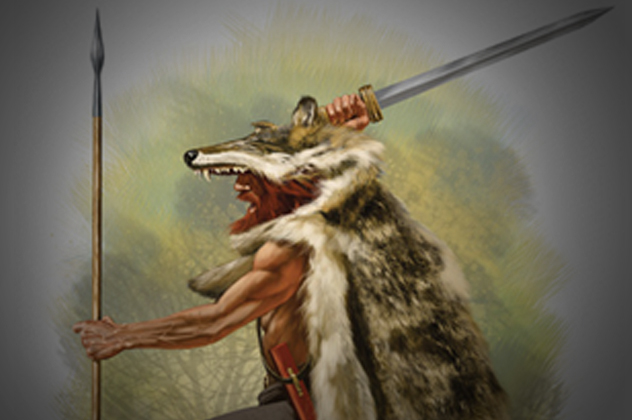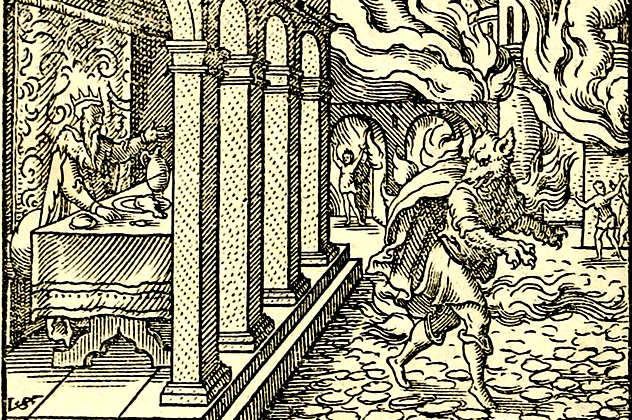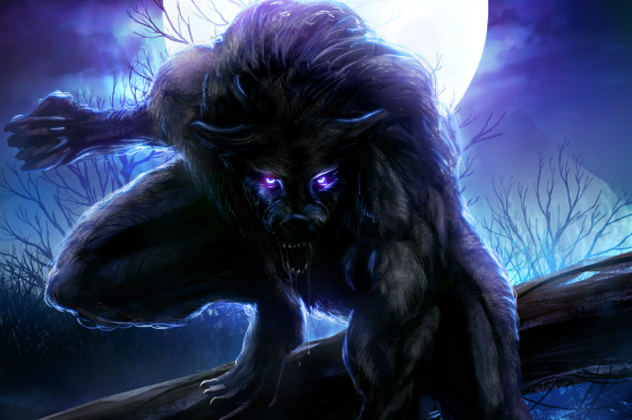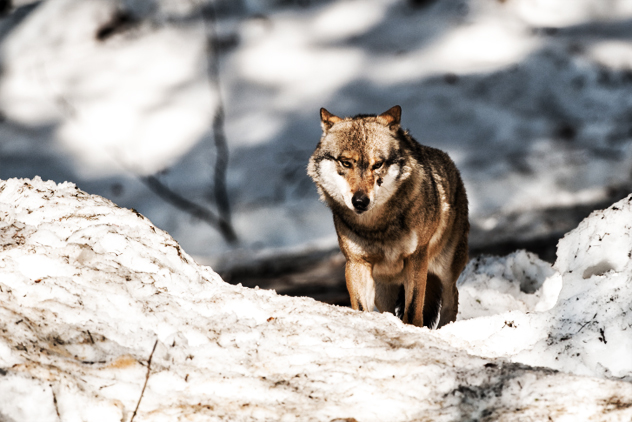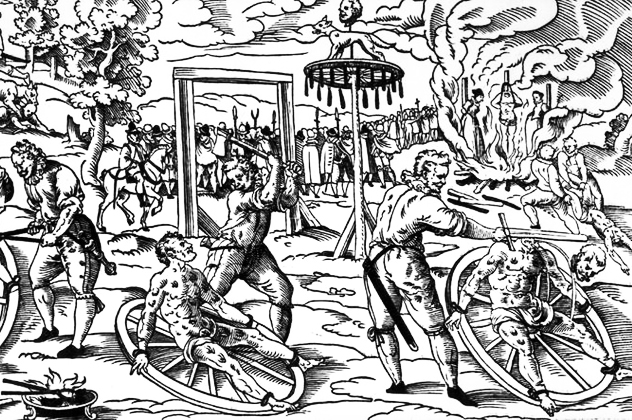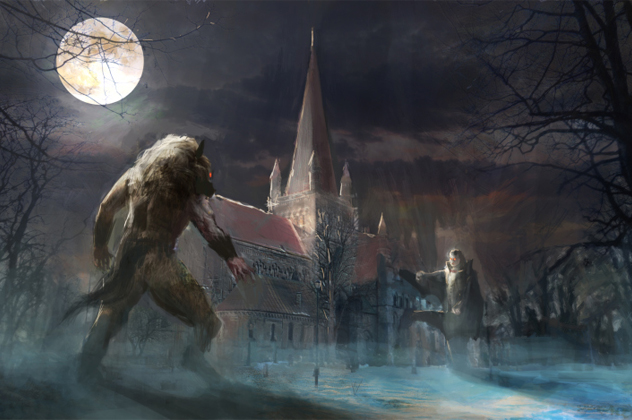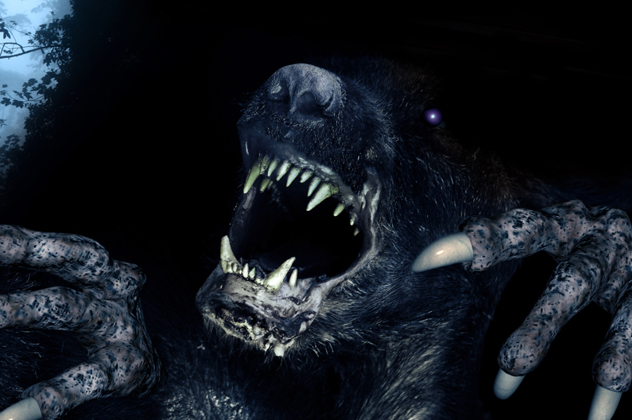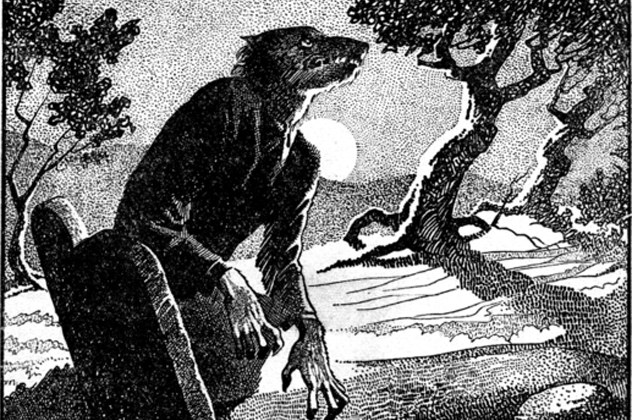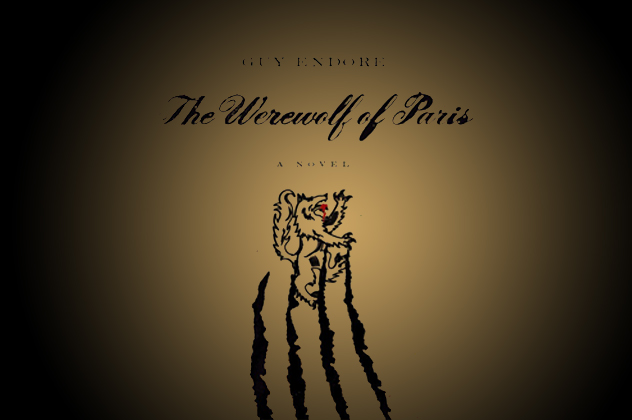The European werewolf, also known as a lycanthrope, is a fixture of modern pop culture. Its origins lie in ancient times, before recorded history, but its role has changed through the ages. Lycanthropy began as a punishment, became a gift, and was rewritten as a curse.
10The Ancient Warrior Class
The Proto-Indo-European culture was a primal civilization that may have existed in ancient Europe. If real, it would be the source of all European culture, but there is no physical evidence of its existence. All we have are clues hidden in disparate languages—common words across nations. Historians have done their best to piece together this mysterious first society. Linguist Kim McCone believes that the Proto-Indo-Europeans had a warrior class of young men who traveled in packs of two to 12 and lived freely off the land. These groups were likened to wolves and called wolf packs. They even dressed in wolf skins and adorned themselves in wolf iconography. According to some theories, these proto-warriors passed on their wolfish traits to their descendants. The Celts and Gaulish had similar warriors. The Greeks had young warriors who lived like wolves in the wild. Some Arcadians wore wolf (or bear) skins instead of using shields. The cult of the wolf persisted longest in Scandinavian tradition, where the ulfhednar were the wolf-skinned counterparts of the bear-skinned berserkers.
9Punishment From The Gods
Lycanthropy, in its earliest literary form, can be found in ancient myths. The oldest instance of a man transforming into a wolf is in the Epic of Gilgamesh. In the story, the goddess Ishtar turned one of her suitors, a shepherd, into a wolf, making him the enemy of his sheep. His dogs tore him to bits. The Arcadian king Lycaon was turned into a wolf as a form of punishment from Zeus. In fact, Lycaon is the eponymous lycanthrope. According to Ovid’s The Metamorphoses, Zeus sought to test humanity, so he walked through Arcadia disguised as a mortal. His goal was to see if anyone could recognize his divinity. Apparently, if they didn’t recognize him he would add a mark to the “destroy all humans” column in his ledger. Most of the common folk recognized him for who he was and fell down and worshiped him. King Lycaon, however, was skeptical of Zeus and devised a divinity test. Lycaon cut the throat of a prisoner, boiled and roasted his limbs, then served them to Zeus disguised as a regular meal. Lycaon believed that if this were truly Zeus, he would recognize the ruse right away. He did. Zeus overturned the table with a lightning bolt and Lycaon fled. In the fields, Lycaon became mad and delighted in slaughtering sheep. His clothes turned to fur, and his arms turned to legs. He became a wolf.
8Enchanted Belts
Becoming a werewolf wasn’t always a punishment. In German lore, some people voluntarily transformed into werewolves to obtain superpowers. They achieved this by wearing enchanted belts made of wolf skin. As wolves, they roamed around at night, attacking their enemies or their enemies’ cattle. Farmers had a way of combating these mischievous werewolves. Throwing a piece of shiny steel over the wolf would cause the belt to temporarily lose its power. This made the beast turn back into a human. One farmer did this to a werewolf and was surprised to see that his neighbor, a respected woman in the village, was now standing naked before him. She begged for mercy and asked him to keep her secret. He promised that he would, but the word soon got out.
7‘Bisclavret’
The 12th-century romantic poem “Bisclavret,” by Marie de France, tells of a baron who becomes a werewolf and can only return to his human form when he wears his people clothes. When Baron Bisclavret’s wife finds out that he is a werewolf, she hides his clothes so that he can never be human again, and then she runs off and marries a knight. Bisclavret survives for a year in the forest until he comes upon the king’s hunting party. The wolf runs up to the king and kisses his boot. The king is so astounded by the wolf’s noble behavior that he calls off the hunting dogs and decides to keep the wolf as a pet. Later, at the castle, the knight who married Bisclavret’s wife shows up for a party. Bisclavret lunges at the knight, but the king restrains him and scolds him with a stick. Some time passes, and the king happens to be traveling through Bisclavret’s homeland. The baroness, Bisclavret’s ex-wife, hears of this and brings gifts for the king, but when Bisclavret sees her, he bites off her nose. The king notices that this woman is the wife of the knight, and that these were the only two people the wolf had ever attacked. Guessing that the knight and his wife must have harmed his wolf, the king arrests them. Under torture, the baroness reveals the truth along with the location of Bisclavret’s clothes. At last, Bisclavret is able to regain human form. His lands are restored to him and he remains good friends with the king. Stories like Bisclavret’s show werewolves in a positive or neutral light. Those interpretations were all but lost when Christian reform swept through Europe.
6Demonized By The Church
The werewolf underwent dramatic changes during the medieval period. Christian scholars had rewritten the pagan werewolf into a creature of aggressive evil. Lycanthropy was now considered a foul curse, acquired through demonic possession or witchcraft. A priest could curse you with lycanthropy as punishment for your sins. Anyone unlucky enough to be born on Christmas Eve would also become a werewolf. Christmas babies were considered blasphemous because they detracted from the nativity of Jesus. At this point in history, widespread belief in werewolves developed in lockstep with that of witches. Both vestiges of the pagan supernatural needed to be hunted and executed. Amid the hysteria, werewolf sightings became a fairly common occurrence. Many people were accused and executed, including serial killers like Peter Stumpp. Villagers often came up with their own tests to identify werewolves in human form. For example, a disguised werewolf would have a unibrow, hairy hands, and a long index finger.
5Revenant Werewolves
In addition to witches, werewolves soon became conflated with the revenants and vampires of the Middle Ages. The Greeks believed that werewolves would rise from the grave as vampires after they were killed. In wolf form, they would haunt battlefields and drain the breath of dying soldiers. They were also said to enter houses and steal babies from their cradles. The Greek werewolves, in life, were different from other werewolves in Europe. Instead of shape-shifting, their souls left their bodies and possessed roaming wolves. The Serbs combined werewolves and vampires into one creature called a vlkoslak. These vamp-wolves came out in the deepest freeze of winter. They held a party in the forest where they would relax by taking off their wolf skins and hanging them on trees. If you could steal and burn one of these skins, the vlkoslak would be cured.
4The Silver Bullet
Since the advent of Christian reform, the werewolf had no particular vulnerabilities and could be disposed of in the same way as any witch or vampire—hack it up and burn the body. Between the years 1764 and 1767, a large wolf or a group of wolves terrorized the province of Gevaudan, France, at the height of werewolf hysteria. The people believed that it was a single demonic werewolf. The attacks reportedly resulted in anywhere from 60 to 113 deaths. It got so bad that King Louis XV sent his royal hunters to take care of the menace. They eventually bagged a large wolf and returned to the king, but the attacks in Gevaudan continued. A militia of local hunters next sought the beast. At last, the massive wolf was shot by Jean Chastel, a local innkeeper. Chastel had loaded his musket with bullets made from a silver chalice blessed by a priest. He believed that the bullets were fatal because they had been made from a cup that held the blood of Christ during communion. The fact that it was made of silver likely made no difference to him. Regardless, this legend may be the source of the modern werewolf’s weakness to silver bullets.
3Gothic Horror
With the emergence of the Age of Enlightenment, people grew out of their superstitions (relatively speaking), and werewolves moved into the world of literature. Because of the recent hysteria, Gothic horror stories involving monsters became popular. One such story is Sabine Baring-Gould’s The Book of Were-wolves (1865). In it, Baring-Gould mentions that werewolves change their form on the night of the full Moon. He also quotes another author who says something similar. This appears to be the earliest reference of lycanthropes transforming in moonlight. Like the silver bullet weakness, this trait would not become canon until 100 years later. The werewolf’s popularity continued into the 20th century, appearing in comic books such as “Weird Tales.” But the werewolf did not yet have a defining text like Dracula, Frankenstein, or Dr. Jekyll and Mr. Hyde.
2The Werewolf Of Paris
The year 1933 saw the publication of The Werewolf of Paris, by Guy Endore. It is considered by many to be the Dracula of werewolf novels. The novel follows Bertrand, a boy who was born on Christmas Eve to a teen girl who had been raped by a priest. Bertrand grows up with sadistic sexual desires that play out in his dreams. Some of those dreams turn out to be memories of things he’d done as a werewolf. After Bertrand attacks a prostitute, kills his friend, and has an incestuous relationship with his mother, he flees to Paris. Bertrand’s uncle, who raised him, gives chase. He arrives in Paris and begins searching for his nephew by studying local murders and mutilated corpses. What he doesn’t know is that Bertrand has fallen in love with a girl, Sophie, who knows about his curse. She’s been helping him suppress it by letting him drink small amounts of her blood. But the beast cannot be tamed easily, and Bertrand fears he will soon lose control. In The Werewolf of Paris, we begin to see the modern werewolf emerge. Bertrand remembers his transformations as dreams, and he loses self-control in the face of temptation. He is an otherwise good man afflicted with a terrible curse that alters his behavior. This novel officially introduces the werewolf’s weakness to silver, a trait that follows werewolves in subsequent fiction.
1The Wolf Man
Hollywood’s first big werewolf film was Universal Pictures’ The Werewolf of London. In the movie, when botanist Wilfred Glendon travels to Tibet to find a rare herb, he is attacked and bitten by a strange creature. He returns to London, and soon two werewolves are terrorizing the city. Glendon refuses to believe that he is one of them. The Werewolf of London introduces the idea of lycanthropy as an infectious disease that spreads by bite. The movie was a flop, however. The Glendon werewolf had little makeup and wore a suit, making him look more like Mr. Hyde than a wolf/human hybrid. The first actor willing to go through the grueling makeup process to create a believable werewolf (at the time) was Lon Chaney Jr. in the 1941 movie The Wolf Man. His legendary transformation scene shocked audiences, pushing werewolves into mainstream culture. The Wolf Man became a staple of the Universal Pictures horror movie franchises. Lon Chaney Jr. reprised his iconic role many times in the years that followed. His movies drew on the scattered werewolf lore of the 19th and 20th centuries to solidify many werewolf tropes. The 1943 crossover movie Frankenstein Meets the Wolf Man finally popularized the concept of werewolves transforming on the night of the full Moon. Read about a beloved dog that might be a werewolf on Matt’s blog.
